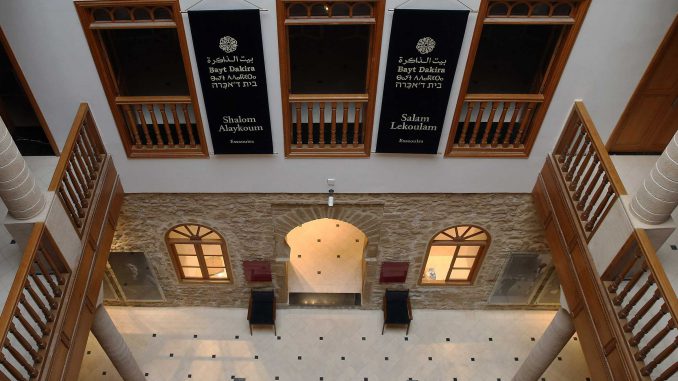
“Bayt Dakira” (House of Memory) or Haïm Zafrani Cultural Center, which His Majesty King Mohammed VI recently inaugurated in Essaouira, in the presence of his Counselor André Azoulay, several Jewish rabbis as well as some Moroccan Jewish artists, is one of the most important Jewish houses in Mogador, the city that hosted the largest gathering of the Jewish community established in Morocco.
“Bayt Dakira” is located in Mellah, the Jewish district of Essaouira. Narrow, tangled streets lead to it. It was originally a “riad” or an ancient house inhabited by one of the wealthy Jewish families.
The house consists of the temple of “Slat Simon Attia”, a famous and wealthy merchant who lived there at the end of the 18th century. He probably owned this riad. He was nicknamed the “Merchant of Sultan”, given his role in the commercial relations between Timbuktu and Essaouira and between this city and the rest of the European and American countries. After his death, his wife Mima Attia decided to honor him by creating a temple in his name within the house.

“Bayt Dakira” also houses a library with a large number of books and publications on the relations between Islam and Judaism in Morocco, which researchers can use. The library also contains documents and works by the Moroccan Jewish researcher Haim Zafrani, which were donated to the institution by his son Serge. The house also includes a cultural residence reserved for researchers wishing to use these documents and work on the same subjects to which they relate.
The house exhibits the biographies of Moroccan Jewish personalities, such as Leslie Blicha, born in 1893 and who died in 1957. He held the posts of Minister of Finance, Transport and Defense in Great Britain, or David Levy, who was born in 1810 and died in 1886, he was the first Jew to be elected to the U.S. Senate. It also exhibits a number of paintings and “portraits” of Jews from Essaouira who served as advisers to the kings of Morocco throughout history. Among them is André Azoulay, who has held this position since 1991, after being appointed by the late King Hassan II, and who continues to hold the same position under the reign of his successor, His Majesty King Mohammed VI.
The house also exhibits old photographs, traditional clothing, religious paraphernalia, archival films, musical recordings, etc.




Be the first to comment